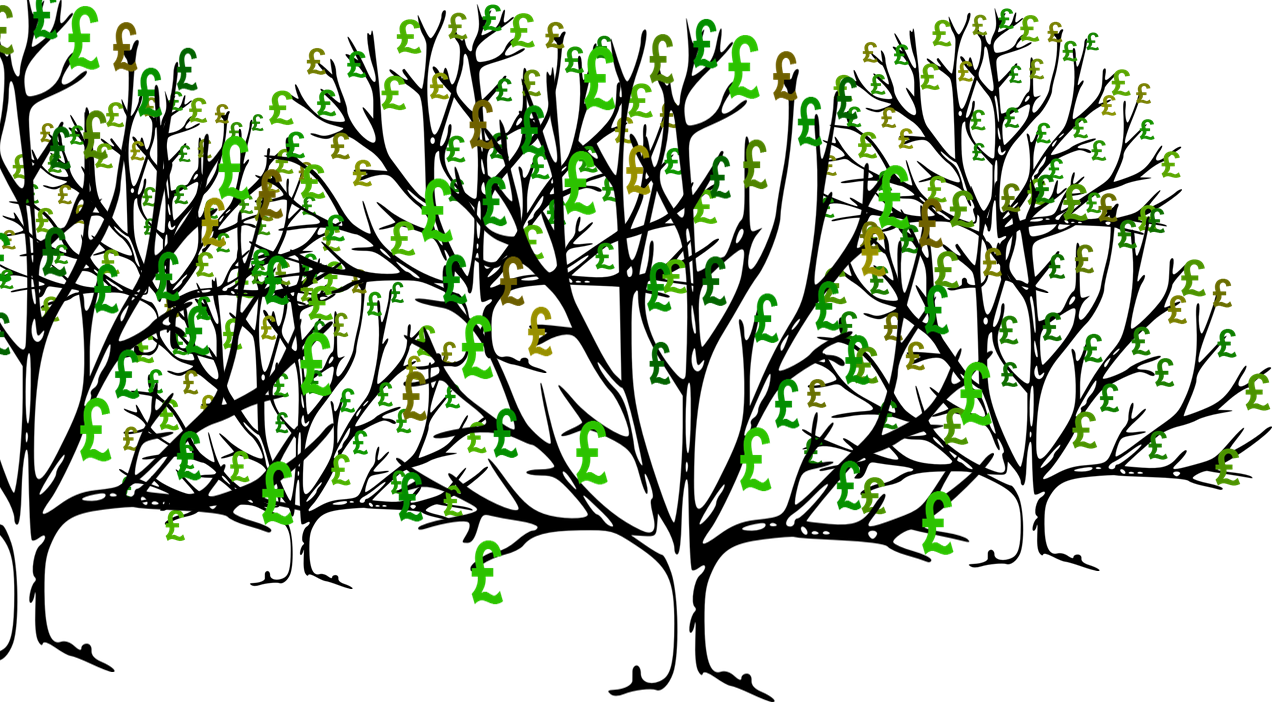 The BBC podcast linked below looks at the use of quantitative easing since 2009 and especially the most recent round since the onset of the pandemic.
The BBC podcast linked below looks at the use of quantitative easing since 2009 and especially the most recent round since the onset of the pandemic.
Although QE was a major contributor to reducing the depth of the recession in 2009–10, it was barely used from 2013 to 2020 (except for a short period in late 2016/early 2017). The Coalition and Conservative governments were keen to get the deficit down. In justifying pay restraint and curbing government expenditure, Prime Ministers David Cameron and Theresa May both argued that there ‘was no magic money tree’.
But with the severely dampening effect of the lockdown measures from March 2020, the government embarked on a large round of expenditure, including the furlough scheme and support for businesses.
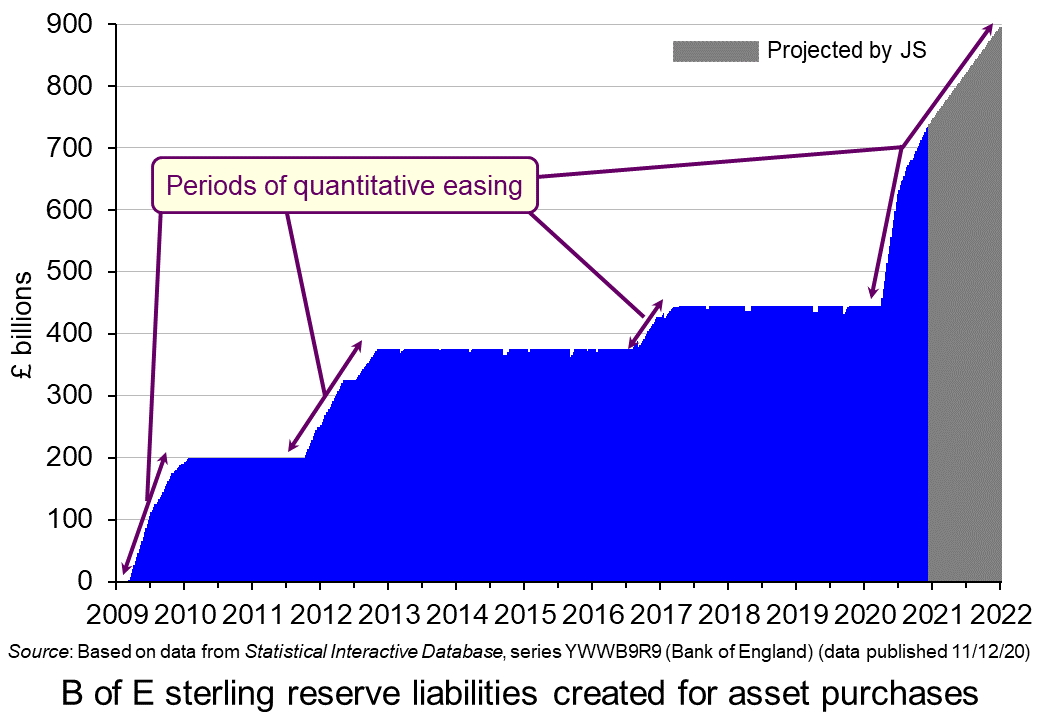 The resulting rise in the budget deficit was accompanied by a new round of QE from the beginning of April. The stock of assets purchased by the Bank of England rose from £445 billion (the approximate level it had been since March 2017) to £740 billion by December 2020 and is planned to reach £895 billion by the end of 2021.
The resulting rise in the budget deficit was accompanied by a new round of QE from the beginning of April. The stock of assets purchased by the Bank of England rose from £445 billion (the approximate level it had been since March 2017) to £740 billion by December 2020 and is planned to reach £895 billion by the end of 2021.
So with the effective funding of the government’s deficits by the creation of new money, does this mean that there is indeed a ‘magic money tree’ or, indeed, a ‘magic money forest’? And if so, is it desirable? Is it simply stoking up problems for the future? Or will, as modern monetary theorists maintain, the extra money, if carefully spent, lead to faster growth and a reducing deficit, with low interest rates making it easy to service the debt?
The podcast explores these issues. There is then a longer list of questions than normal relating to the topics raised in the podcast.
Podcast
Questions
- Which of the following are stocks and which are flows?
(a) Money
(b) Income
(c) The total amount people save each month
(d) The money held in savings accounts
(e) Public-sector net debt
(f) Public-sector net borrowing
(g) National income
(h) Injections into the circular flow of income
(i) Aggregate demand
(j) Wealth
- How do banks create money?
- What is the role of the Debt Management Office in the sale of gilts?
- Describe the birth of QE.
- Is raising asset prices the best means of stimulating the economy? What are the disadvantages of this form of monetary expansion?
- What are the possible exit routes from QE and what problems could occur from reducing the central bank’s stock of assets?
- Is the use of QE in the current Covid-19 crisis directly related to fiscal policy? Or is this use of monetary policy simply a means of hitting the inflation target?
- What are the disadvantages of having interest rates at ultra-low levels?
- Does it matter if the stock of government debt rises substantially if the gilts are at ultra-low fixed interest rates?
- What are the intergenerational effects of substantial QE? Does it depend on how debt is financed?
- How do the policy recommendations of modern monetary theorists differ from those of more conventional macroeconomists?
- In an era of ultra-low interest rates, does fiscal policy have a greater role to play than monetary policy?
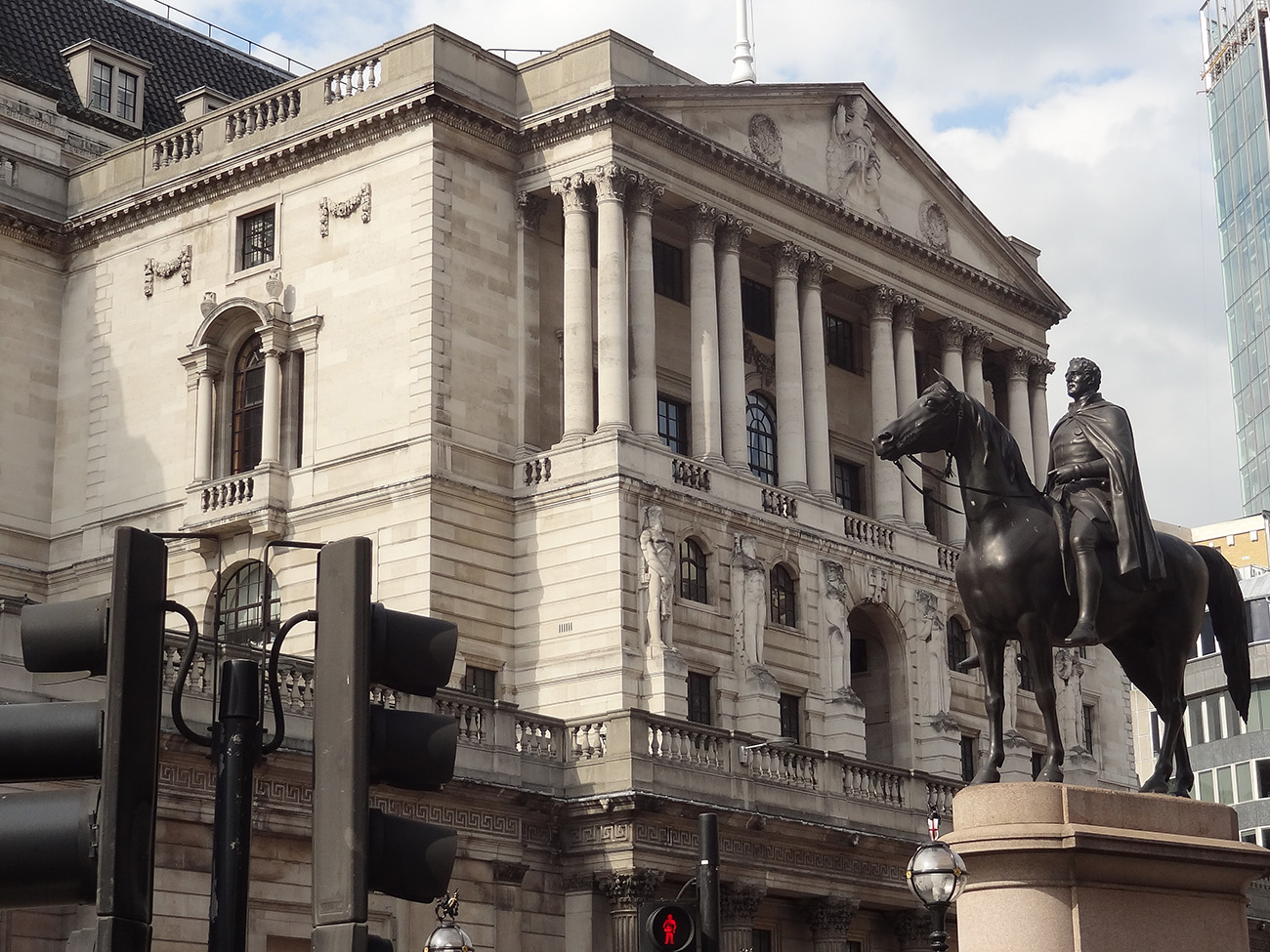 At its meeting on 6 May, the Bank of England’s Monetary Policy Committee decided to keep Bank Rate at 0.1%. Due to the significant impact of COVID-19 and the measures put in place to try to contain the virus, the MPC voted unanimously to keep Bank Rate the same.
At its meeting on 6 May, the Bank of England’s Monetary Policy Committee decided to keep Bank Rate at 0.1%. Due to the significant impact of COVID-19 and the measures put in place to try to contain the virus, the MPC voted unanimously to keep Bank Rate the same.
However, it decided not to launch a new stimulus programme, with the committee voting by a majority of 7-2 for the Bank to continue with the current programme of quantitative easing. This involves the purchase of £200 billion of government and sterling non-financial investment-grade corporate bonds, bringing the total stock of bonds held by the Bank to £645 billion.
The Bank forecast that the crisis will put the economy into its deepest recession in 300 years, with output plunging 30 per cent in the first half of the year.
Monetary policy and MPC
Monetary policy is the tool used by the UK’s central bank to influence how much money is in the economy and how much it costs to borrow. The Bank of England’s main monetary policy tools include setting the Bank Rate and quantitative easing (QE). Bank Rate is the interest rate charged to banks when they borrow money from the BoE. QE is the process of creating money digitally to buy corporate and government bonds.
The BoE’s Monetary Policy Committee (MPC) sets monetary policy to meet the 2% inflation target. Maintaining a low and stable inflation rate is good for the economy and it is the main monetary policy aim. However, the Bank also has to balance this target with the government’s other economic aims of sustaining growth and employment in the economy.
Actions taken by the MPC
It is challenging to respond to severe economic and financial disruption, with the UK economy looking unusually uncertain. Activity has fallen sharply since the beginning of the year and unemployment has risen markedly. The current rate of inflation, measured by the Consumer Price Index (CPI), declined to 1.5% in March and is likely to fall below 1% in the next few months. Household consumption has fallen by around 30% as consumer confidence has declined. Companies’ sales are expected to be around 45% lower than normal and business investment 50% lower.
In the current circumstances, and consistent with the MPC’s remit, monetary policy is aimed at supporting businesses and households through the crisis and limiting any lasting damage to the economy. The Bank has used both main monetary tools to fulfil its mandate and attempt to boost the economy amid the current lockdown. The Bank Rate was reduced to 0.1% in March, the lowest level in the Bank’s 325-year history and the current programme of QE was introduced in March.
What is next?
This extraordinary time has seen the outlook for the all global economies become uncertain. 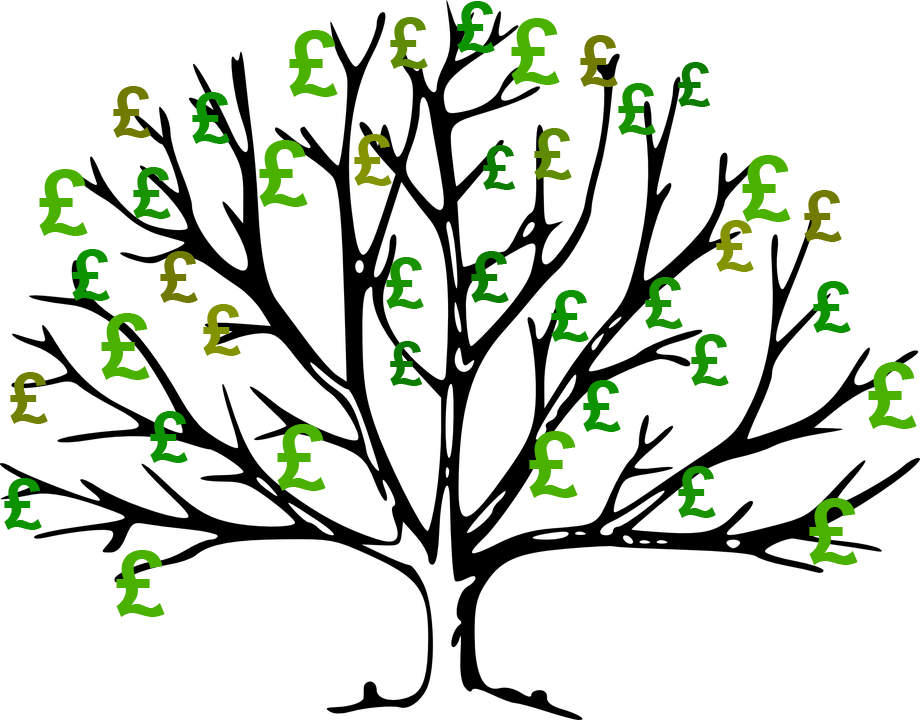 The long-term outcome will depend critically on the evolution of the pandemic, and how governments, households and businesses respond to it. The Bank of England has stated that businesses and households will need to borrow to get through this period and is encouraging banks and building societies to increase their lending. Britain’s banks are warned that if they try to stem losses by restricting lending, they will make the situation worse. The Bank believes that the banks are strong enough to keep lending, which will support the economy and limit losses to themselves.
The long-term outcome will depend critically on the evolution of the pandemic, and how governments, households and businesses respond to it. The Bank of England has stated that businesses and households will need to borrow to get through this period and is encouraging banks and building societies to increase their lending. Britain’s banks are warned that if they try to stem losses by restricting lending, they will make the situation worse. The Bank believes that the banks are strong enough to keep lending, which will support the economy and limit losses to themselves.
In the short term, a bleak picture of the UK economy is suggested, with a halving in business investment, a near halving in business sales, a sharp rise in unemployment and households cutting their spending by a third. Despite its forecast that GDP could shrink by 14% for 2020, the Bank of England is forecasting a ‘V’ shaped recovery. In this scenario, the recovery in economic activity, once measures are softened, is predicted to be relatively rapid and inflation rises to around the 2 per cent target. However, this would be after a dip to 0.5% in 2021, before returning to the 2 per cent target the following year.
However, there are some suggestions that the Bank’s forecast for the long-term recovery is too optimistic. Yael Selfin, chief economist at KPMG UK, fears the UK economy could shrink even more sharply than the Bank of England has forecast.
Despite the stark numbers issued by the Bank of England today, additional pressure on the economy is likely. Some social distancing measures are likely to remain in place until we have a vaccine or an effective treatment for the virus, with people also remaining reluctant to socialise and spend. That means recovery is unlikely to start in earnest before sometime next year.
 There are also additional factors that could dampen future productivity, such as the impact on supply chains, with ‘just-in-time’ operations potentially being a thing of the past.
There are also additional factors that could dampen future productivity, such as the impact on supply chains, with ‘just-in-time’ operations potentially being a thing of the past.
There is also the ongoing issue of Brexit. This is a significant downside risk as the probability of a smooth transition to a comprehensive free-trade agreement with the EU in January is relatively small. This will only increase uncertainty for businesses along with the prospect of increased trade frictions next year.
Conclusion
The predictions from the Bank of England are based on many assumptions, one of which is that the economy will only be gradually released from lockdown. Its numbers contain the expectations that consumer and worker behaviour will change significantly, and continue for some time, with forms of voluntary social distancing. On the other hand, Mr Bailey expects the recovery to be much faster than seen with the financial crisis a decade ago. However, again this is based on the assumption that measures put in place from the public health side prevent a second wave of the virus.
It also assumes that the supply-side effects on the economy will be limited in the long run. Many economists disagree, arguing that the ‘scarring effects’ of the lockdown may be substantial. These include lower rates of investment, innovation and start ups and the deskilling effects on labour. They also include the businesses that have gone bankrupt and the dampening effect on consumer and business confidence. Finally, with a large increase in lending to tide firms over the crisis, many will face problems of debt, which will dampen investment.
The Bank of England does recognise these possible scarring effects. Specifically, it warns of the danger of a rise in equilibrium unemployment:
It is possible that the rise in unemployment could prove more persistent than embodied in the scenario, for example if companies are reluctant to hire until they are sure about the robustness of the recovery in demand. It is also possible that any rise in unemployment could lead to an increase in the long‑term equilibrium rate of unemployment. That might happen if the skills of the unemployed do not increase to the same extent as they would if they were working, for example, or even erode over time.
What is certain, however, is that the long-term picture will only become clearer when we start to come out of the crisis. Bailey implied that the Bank is taking a wait-and-see approach for now, waiting on the UK government to shed some light about easing of lockdown measures before taking any further action with regards to QE. The MPC will continue to monitor the situation closely and, consistent with its remit, stands ready to take further action as necessary to support the economy and ensure a sustained return of inflation to the 2% target. Paul Dales, chief UK economist at Capital Economics, suggested that the central bank is signalling that ‘more QE is coming, if not in June, then in August’.
Articles
Bank of England publication
Questions
- How could the BoE use monetary policy to boost the economy?
- Explain how changes in interest rates affect aggregate demand.
- Define and explain quantitative easing (QE).
- How might QE help to stimulate economic growth?
- How is the pursuit of QE likely to affect the price of government bonds? Explain.
- Evaluate the extent to which monetary policy is able to stimulate the economy and achieve price stability.
 The US Federal Reserve, like many other central banks, engaged in massive quantitative easing in the wake of the financial crisis of 2007/8. Over three rounds, QE1, QE2 and QE3, it accumulated $4.5 trillion of assets – mainly government bonds and mortgage-backed securities (see chart below: click here for a PowerPoint). But, unlike its counterparts in the UK, the eurozone and Japan, it has long ceased its programme of asset purchases.. In October 2014, it announced that QE was at an end. All that would be done in future would be to replace existing holdings of assets as they matured, keeping total holdings roughly constant.
The US Federal Reserve, like many other central banks, engaged in massive quantitative easing in the wake of the financial crisis of 2007/8. Over three rounds, QE1, QE2 and QE3, it accumulated $4.5 trillion of assets – mainly government bonds and mortgage-backed securities (see chart below: click here for a PowerPoint). But, unlike its counterparts in the UK, the eurozone and Japan, it has long ceased its programme of asset purchases.. In October 2014, it announced that QE was at an end. All that would be done in future would be to replace existing holdings of assets as they matured, keeping total holdings roughly constant.
But now this policy is set to change. The Fed is about to embark on a programme of ‘quantitative tightening’, already being dubbed ‘QT’. This involves the Fed reducing its holdings of assets, mainly government bonds and government-backed mortgage-related securities.
 This, however, for the time being will not include selling its holding of bonds or mortgage-backed securities. Rather, it will simply mean not buying new assets to replace ones when they mature, or only replacing part of the them. This was discussed by the 75 participants at the joint meeting of the Federal Open Market Committee (FOMC) and Board of Governors on 14–15 March.
This, however, for the time being will not include selling its holding of bonds or mortgage-backed securities. Rather, it will simply mean not buying new assets to replace ones when they mature, or only replacing part of the them. This was discussed by the 75 participants at the joint meeting of the Federal Open Market Committee (FOMC) and Board of Governors on 14–15 March.
As the minutes put it: “Many participants emphasized that reducing the size of the balance sheet should be conducted in a passive and predictable manner.”
A more active form of QT would involve selling assets before maturity and thus reducing the size of the Fed’s balance sheet more rapidly. But either way, reducing assets would put downward pressure on the money supply and support the higher interest rates planned by the FOMC.
The question is whether there is enough liquidity elsewhere in the system and enough demand for credit, and willingness of the banking system to supply credit, to allow a sufficient growth in broad money – sufficient, that is, to support continued growth in the economy. The answer to that question depends on confidence. The Fed, not surprisingly, is keen not to damage confidence and hence prefers a gradualist approach to reducing its holdings of assets bought during the various rounds of quantitative easing.
Articles
Fed’s asset shift to pose new test of economy’s recovery, resilience Reuters, Howard Schneider and Richard Leong (6/4/17)
Federal Reserve likely to begin cutting back $4.5 trillion balance sheet this year Washington Post, Ana Swanson (5/4/17)
Why the Fed’s debate about shrinking its balance sheet really, really matters Money Observer, Russ Mould (7/4/17)
The Fed and ECB keep a cautious eye on the exit Financial Times (7/4/17)
Get ready for the Fed’s next scary policy change CBS Money Watch, Anthony Mirhaydari (5/4/17)
The Fed wants to start shrinking its $4.5 trillion balance sheet later this year Business Insider, Akin Oyedele (5/4/17)
Inside the Fed’s March Meeting: The Annotated Minutes Bloomberg, Luke Kawa, Matthew Boesler and Alex Harris (5/4/17)
QE was great for asset prices – will ‘QT’ smash them? The Financial Review (Australia), Patrick Commins (7/4/17)
Shrinking the Fed’s balance sheet Brookings, Ben Bernanke (26/1/17)
Data
Selected data Board of Governors of the Federal Reserve System
Questions
- Distinguish between active and passive QT.
- If QE is a form of expansionary monetary policy, is QT a form of contractionary monetary policy?
- Could QT take place alongside an expansion of broad money?
- What dangers lie in the Fed scaling back its holdings of government (Treasury) bonds and mortgage-backed securities?
- Why is it unlikely that the Fed will reduce its holdings of securities to pre-crisis levels?
- Why are the Bank of England, the ECB and the Bank of Japan still pursuing a policy of QE?
- What are the implications for exchange rates of QT in the USA and QE elsewhere?
- Find out data for the monetary base, for narrow money (M1) and broader money (M2) in the USA. Are narrow and/or broad money correlated with Federal Reserve asset holdings?
 Interest rates have been at record lows across the developed world since 2009. Interest rates were reduced to such levels in order to stimulate recovery from the financial crisis of 2007–8 and the resulting recession. The low interest rates were accompanied by extraordinary increases in money supply under various rounds of quantitative easing in the USA, UK, Japan and eventually the eurozone. But have such policies done harm?
Interest rates have been at record lows across the developed world since 2009. Interest rates were reduced to such levels in order to stimulate recovery from the financial crisis of 2007–8 and the resulting recession. The low interest rates were accompanied by extraordinary increases in money supply under various rounds of quantitative easing in the USA, UK, Japan and eventually the eurozone. But have such policies done harm?
This is the contention of Brian Sturgess in a new paper, published by the Centre for Policy Studies. He maintains that the policy has had a number of adverse effects:
|
|
| • |
There will be nothing left in the monetary policy armoury when the next downturn occurs other than even more QE, which will compound the following problems. |
| • |
It has had little effect in stimulating aggregate demand and economic growth. Instead the extra money has been used to repair balance sheets and support unprofitable businesses. |
| • |
It has inflated asset prices, especially shares and property, which has encouraged funds to flow to the secondary market rather than to funding new investment. |
| • |
The inflation of asset prices has benefited the already wealthy. |
| • |
By keeping interest rates down to virtually zero on savings accounts, it has punished small savers. |
| • |
By rewarding the rich and penalising small savers, it has contributed to greater inequality. |
| • |
By keeping interest rates down to borrowers, it has encouraged households to take on excessive amounts of debt, which will be hard to service if interest rates rise. |
| • |
It has lowered the price of risk, thereby encouraging more risky types of investment and the general misallocation of capital. |
 Sturgess argues that it is time to end the policy of low interest rates. Currently, in all the major developed economies, central bank rates are below the rate of inflation, making the real central bank interest rates negative.
Sturgess argues that it is time to end the policy of low interest rates. Currently, in all the major developed economies, central bank rates are below the rate of inflation, making the real central bank interest rates negative.
He welcomes the two small increases by the Federal Reserve, but this should be followed by further rises, not just by the Fed, but by other central banks too. As Sturgess states in the paper (p.12):
In place of ever more extreme descents into the unknown, central banks should quickly renormalise monetary policy. That would involve ending QE and allowing interest rates to rise steadily so that interest rates can carry out their proper functions. Failure to do so will leave the global financial system vulnerable to potential shocks such as the failure of the euro, or the fiscal stresses in the US resulting from the unfinanced spending plans announced by Donald Trump in his presidential campaign.
Although Sturgess argues that the initial programmes of low interest rates and QE were a useful response to the financial crisis, he argues that they should have only been used as a short-term measure. However, if they were, and if interest rates had gone up within a few months, many argue that the global economy would rapidly have sunk back into recession. This has certainly been the position of central banks. Sturgess disagrees.
Articles
Damaging low interest rates and QE must end now, think thank warns The Telegraph, Julia Bradshaw (23/1/17)
QE has driven pension deficits up, think-tank argues Money Marketing, Justin Cash (23/1/17)
Hold: The ECB keeps interest rates and QE purchases steady as Mario Draghi defends loose policy from hawkish critics City A.M., Jasper Jolly (19/1/17)
Preparing for the Post-QE World Bloomberg, Jean-Michel Paul (12/10/16)
Paper
Stop Depending on the Kindness of Strangers: Low interest rates and the Global Economy Centre for Policy Studies, Brian Sturgess (23/1/17)
Questions
- Find out what the various rounds of quantitative easing have been in the USA, the UK, Japan and the eurozone.
- What are the arguments in favour of quantitative easing as it has been practised?
- How might interest rates close to zero result in the misallocation of capital?
- Sturgess claims that the existence of ‘spillover’ effects has had damaging effects on many emerging economies. What are these spillover effects and what damage have they done to such economies?
- How do low interest rates affect interest rate spreads?
- Have pensioners gained or lost from QE? Explain how the answer may vary between different pensioners.
- What is meant by a ‘natural’ or ‘neutral’ rate of interest (see section 3.2 in the paper)? Why, according to Janet Yellen (currently Federal Reserve Chair, writing in 2005), is this somewhere between 3.5% and 5.5% (in nominal terms)?
- What are the arguments for and against using created money to finance programmes of government infrastructure investment?
- Would helicopter money be more effective than QE via asset purchases in achieving faster economic growth? (See the blog posts: A flawed model of monetary policy and New UK monetary policy measures – somewhat short of the kitchen sink.)
- When QE comes to an end in various countries, what are the arguments for absorbing rather than selling the assets purchased by central banks? (See the Bloomberg article.)
 Seven years ago (on 5 March 2009), the Bank of England reduced interest rates to a record low of 0.5%. This was in response to a deepening recession. It mirrored action taken by other central banks across the world as they all sought to stimulate their economies, which were reeling from the financial crisis.
Seven years ago (on 5 March 2009), the Bank of England reduced interest rates to a record low of 0.5%. This was in response to a deepening recession. It mirrored action taken by other central banks across the world as they all sought to stimulate their economies, which were reeling from the financial crisis.
Record low interest rates, combined with expansionary fiscal policy, were hoped to be enough to restore rates of growth to levels experienced before the crisis. But they weren’t. One by one countries increased narrow money through bouts of quantitative easing.
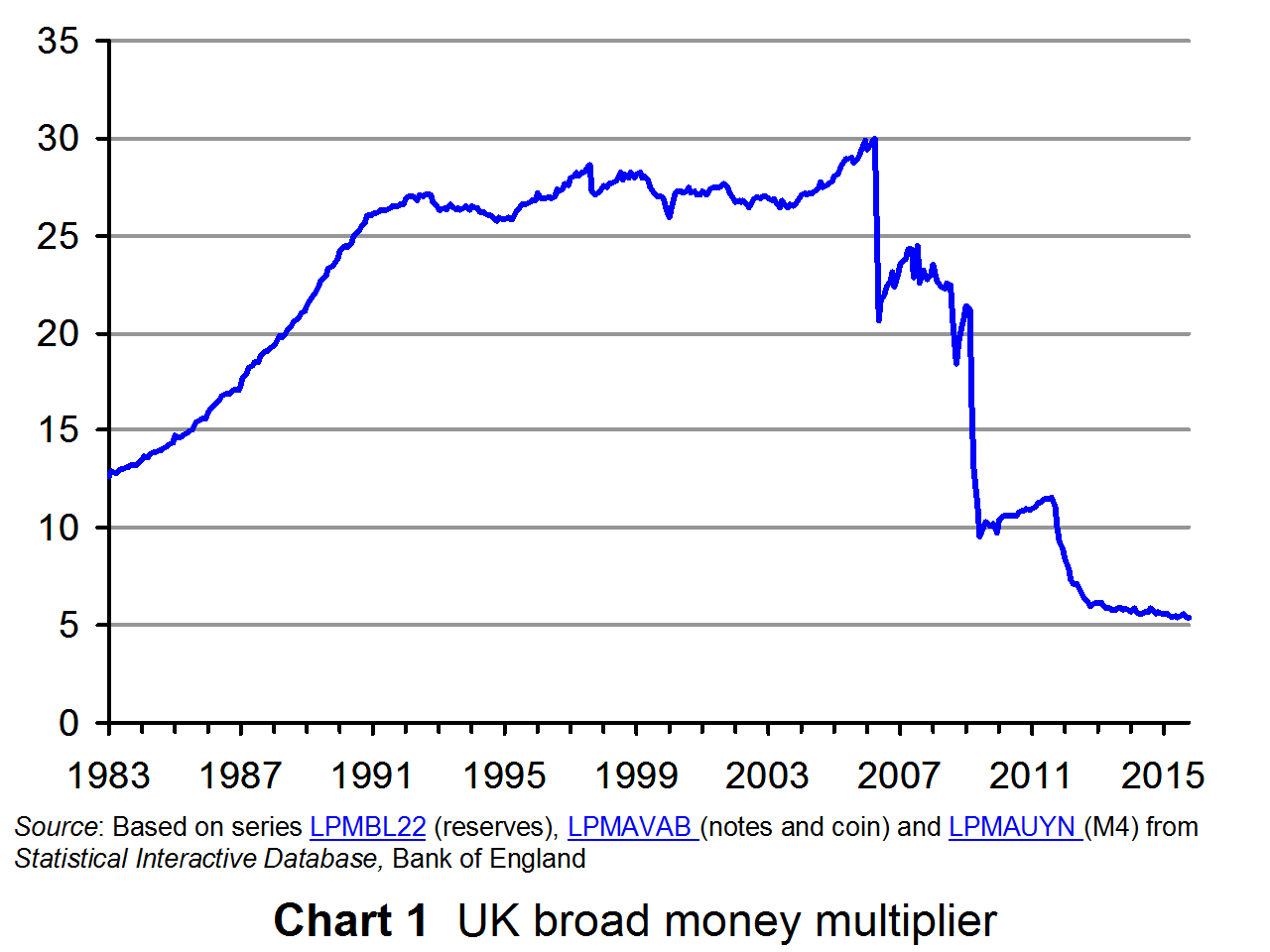 But as worries grew about higher government deficits, brought about by the expansionary fiscal policies and by falling tax receipts as incomes and spending fell, so fiscal policy became progressively tighter. Thus more and more emphasis was put on monetary policy as the means of stimulating aggregate demand and boosting economic growth.
But as worries grew about higher government deficits, brought about by the expansionary fiscal policies and by falling tax receipts as incomes and spending fell, so fiscal policy became progressively tighter. Thus more and more emphasis was put on monetary policy as the means of stimulating aggregate demand and boosting economic growth.
Ultra low interest rates and QE were no longer a short-term measure. They persisted as growth rates remained sluggish. The problem was that the higher narrow money supply was not leading to the hoped-for credit creation and growth in consumption and investment. 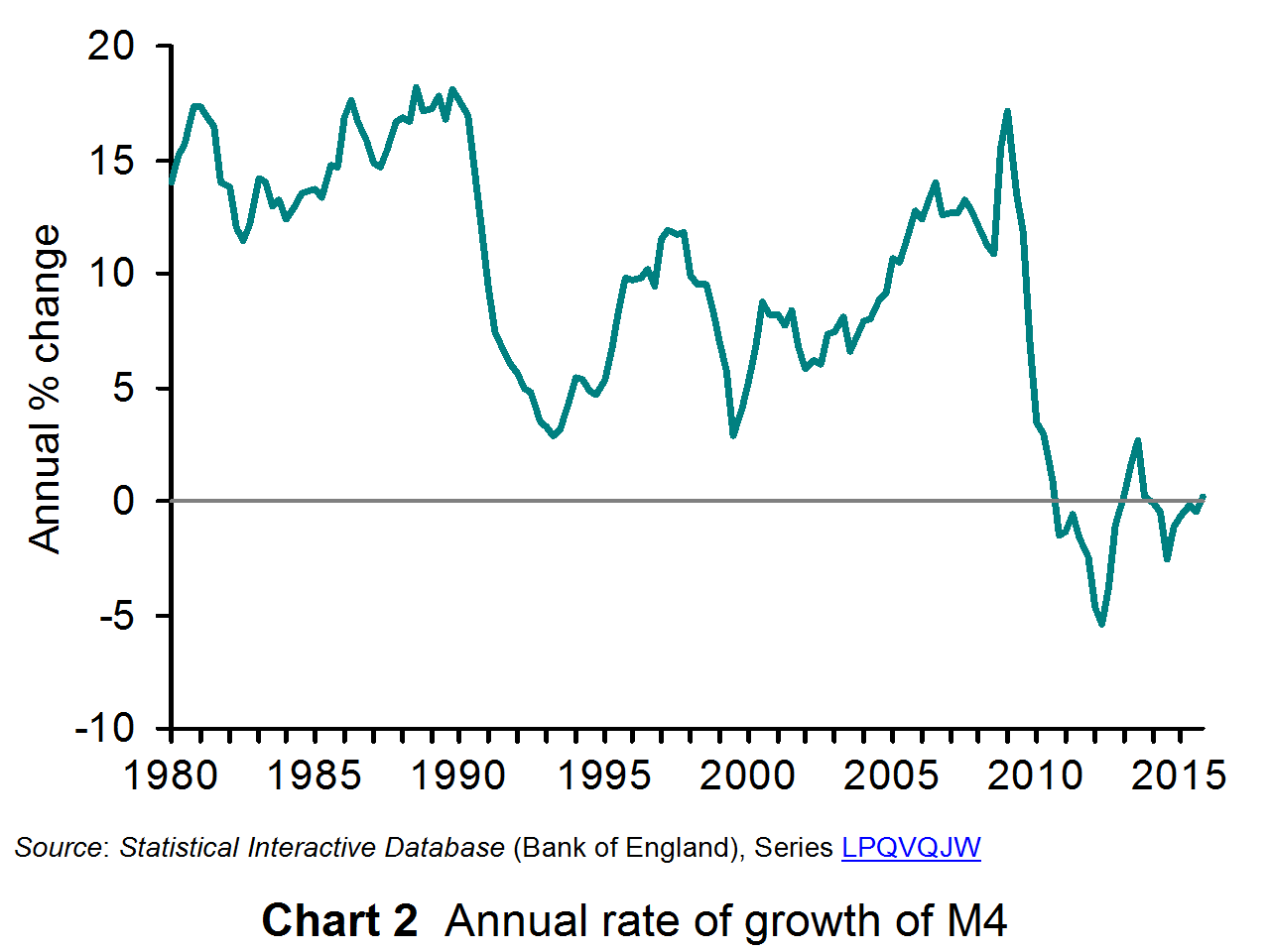 The extra money was being used for buying assets, such as shares and houses, not being spent on goods, services, plant and equipment. The money multiplier fell dramatically in many countries (see chart 1 for the case of the UK: click here for a PowerPoint) and there was virtually no growth in credit creation. Broad money in the UK (M4) has actually fallen since 2008 (see chart 2: click here for a PowerPoint), as it has in various other countries.
The extra money was being used for buying assets, such as shares and houses, not being spent on goods, services, plant and equipment. The money multiplier fell dramatically in many countries (see chart 1 for the case of the UK: click here for a PowerPoint) and there was virtually no growth in credit creation. Broad money in the UK (M4) has actually fallen since 2008 (see chart 2: click here for a PowerPoint), as it has in various other countries.
Additional monetary measures were put in place, including various schemes to provide money to banks for direct lending to companies or individuals. Central banks increasingly resorted to zero or negative interest rates paid to banks for deposits: see the blog posts Down down deeper and down, or a new Status Quo? and When a piggy bank pays a better rate. But still bank lending has stubbornly failed to take off.
Some indication that the ’emergency’ was coming to an end occurred in December 2015 when the US Federal Reserve raised interest rates by 0.25 percentage points. However, many commentators felt that that was too soon, especially in the light of slowing Chinese economic growth. Indeed, the Chinese authorities themselves have been engaging in a large scale QE programme and other measures to arrest this fall in growth.
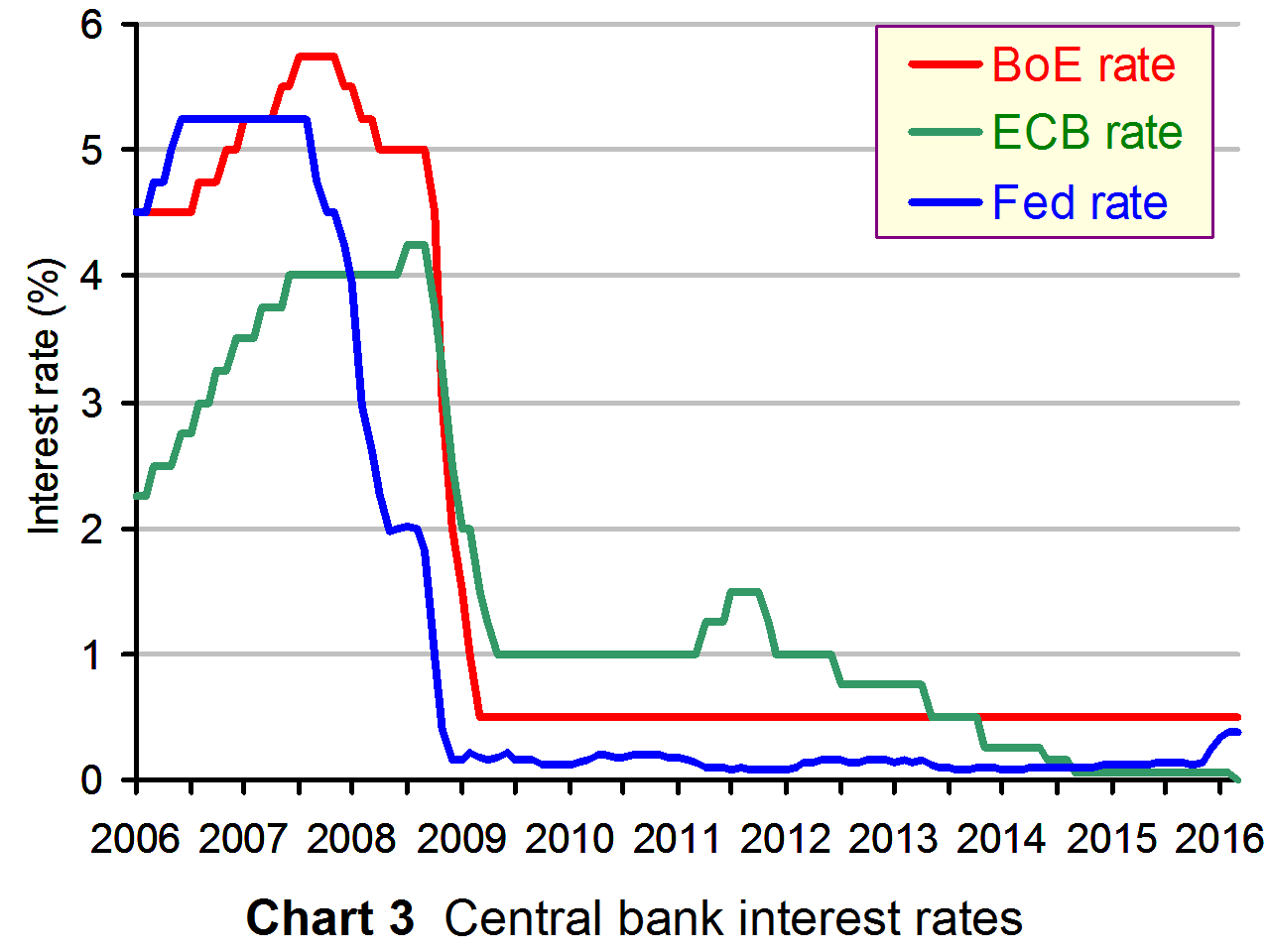 Although it cut interest rates in 2009 (to 1% by May 2009), the ECB was more cautious than other central banks in the first few years after 2008 and even raised interest rates in 2011 (to 1.5% by July of that year). However, more recently it has been more aggressive in its monetary policy. It has progressively cut interest rates (see chart 3: click here for a PowerPoint) and announced in January 2015 that it was introducing a programme of QE, involving €60 billion of asset purchases for at least 18 months from March 2015. In December 2015, it announced that it would extend this programme for another six months.
Although it cut interest rates in 2009 (to 1% by May 2009), the ECB was more cautious than other central banks in the first few years after 2008 and even raised interest rates in 2011 (to 1.5% by July of that year). However, more recently it has been more aggressive in its monetary policy. It has progressively cut interest rates (see chart 3: click here for a PowerPoint) and announced in January 2015 that it was introducing a programme of QE, involving €60 billion of asset purchases for at least 18 months from March 2015. In December 2015, it announced that it would extend this programme for another six months.
The latest move by the ECB was on March 10, when it took three further sets of measures to boost the flagging eurozone economy. It cut interest rates, including cutting the deposit rate paid to banks from –0.3% to –0.4% and the main refinancing rate from –0.05% to –0%; it increased its monthly quantitative easing from €60 billion to €80 billion; and it announced unlimited four-year loans to banks at near-zero interest rates.
It would seem that the emergency continues!
Articles
QE, inflation and the BoE’s unreliable boyfriend: seven years of record low rates The Guardian, Katie Allen (5/3/16)
The End of Alchemy: Money, Banking and the Future of the Global Economy by Mervyn King – review The Observer, John Kampfner (14/3/16)
How ‘negative interest rates’ marked the end of central bank dominance The Telegraph, Peter Spence (21/2/16)
ECB stimulus surprise sends stock markets sliding BBC News (10/3/16)
5 Takeaways From the ECB Meeting The Wall Street Journal, Paul Hannon (10/3/16)
ECB cuts interest rates to zero amid fears of fresh economic crash The Guardian, Katie Allen and Jill Treanor (10/3/16)
 Economists mixed on ECB stimulus CNBC, Elizabeth Schulze (10/3/16)
Economists mixed on ECB stimulus CNBC, Elizabeth Schulze (10/3/16)
ECB’s Draghi plays his last card to stave off deflation The Telegraph, Ambrose Evans-Pritchard (10/3/16)
ECB cuts rates to new low and expands QE Financial Times, Claire Jones (10/3/16)
Is QE a saviour, necessary evil or the road to perdition? The Telegraph, Roger Bootle (20/3/16)
ECB materials
Monetary policy decisions ECB Press Release (10/3/16)
Introductory statement to the press conference (with Q&A) ECB Press Conference, Mario Draghi and Vítor Constâncio (10/3/16)
 ECB Press Conference webcast ECB, Mario Draghi
ECB Press Conference webcast ECB, Mario Draghi
Questions
- What are meant by narrow and broad money?
- What is the relationship between narrow and broad money? What determines the amount that broad money will increase when narrow money increases?
- Explain what is meant by (a) the credit multiplier and (b) the money multiplier.
- Explain how the process of quantitative easing is supposed to result in an increase in aggregate demand. How reliable is this mechanism?
- Find out and explain what happened to the euro/dollar exchange rate when Mario Draghi made the announcement of the ECB’s monetary measures on 10 March.
- Is there a conflict for central banks between trying to strengthen banks’ liquidity and reserves and trying to stimulate bank lending? Explain.
- Why are “the ECB’s policies likely to destroy half of Germany’s 1500 savings and co-operative banks over the next five years”? (See the Telegraph article.
- What are the disadvantages of quantitative easing?
- What are the arguments for and against backing up monetary policy with expansionary fiscal policy? Consider different forms that this fiscal policy might take.
 The BBC podcast linked below looks at the use of quantitative easing since 2009 and especially the most recent round since the onset of the pandemic.
The BBC podcast linked below looks at the use of quantitative easing since 2009 and especially the most recent round since the onset of the pandemic.  The resulting rise in the budget deficit was accompanied by a new round of QE from the beginning of April. The stock of assets purchased by the Bank of England rose from £445 billion (the approximate level it had been since March 2017) to £740 billion by December 2020 and is planned to reach £895 billion by the end of 2021.
The resulting rise in the budget deficit was accompanied by a new round of QE from the beginning of April. The stock of assets purchased by the Bank of England rose from £445 billion (the approximate level it had been since March 2017) to £740 billion by December 2020 and is planned to reach £895 billion by the end of 2021.  The Magic Money Forest (alternative link)
The Magic Money Forest (alternative link) At its meeting on 6 May, the Bank of England’s Monetary Policy Committee
At its meeting on 6 May, the Bank of England’s Monetary Policy Committee  The long-term outcome will depend critically on the evolution of the pandemic, and how governments, households and businesses respond to it. The Bank of England has stated that businesses and households will need to borrow to get through this period and is encouraging banks and building societies to increase their lending. Britain’s banks are warned that if they try to stem losses by restricting lending, they will make the situation worse. The Bank believes that the banks are strong enough to keep lending, which will support the economy and limit losses to themselves.
The long-term outcome will depend critically on the evolution of the pandemic, and how governments, households and businesses respond to it. The Bank of England has stated that businesses and households will need to borrow to get through this period and is encouraging banks and building societies to increase their lending. Britain’s banks are warned that if they try to stem losses by restricting lending, they will make the situation worse. The Bank believes that the banks are strong enough to keep lending, which will support the economy and limit losses to themselves. There are also additional factors that could dampen future productivity, such as the impact on supply chains, with ‘just-in-time’ operations potentially being a thing of the past.
There are also additional factors that could dampen future productivity, such as the impact on supply chains, with ‘just-in-time’ operations potentially being a thing of the past.






